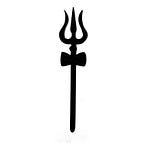The Mystical Beauty of ‘Vedas’
Achieve Knowledge, Remove Ignorance.
In the modern age of mundane activities, life has accelerated ahead in terms of social, cultural, political, economic and technological changes. The world has become competitive in all aspects, which in turn has produced gaps and cracks in the lives of the people. Each of the societal changes has managed to control every aspect of human life, which has deteriorated the human consciousness. The levels of human introspection is missing which fills a void in populations, societies, individuals and in turn our inner self.
According to Maslow’s hierarchy of needs, Self- fulfilment (self-actualization) needs are achieved once basic and psychological needs are acquired. Humans achieve one`s full potential which encompasses the creative activities in self-actualization. Vedas, which are the ancient scriptures in Hinduism (actually known as Sanatana Dharma) contain the fundamental knowledge related to the different facets of human existence. These ancient scriptures are believed to be revealed to the ancient Indian Seers ( known as Rishi Munis) and the timeline estimates are supposed to be 5000 + to 1500 years ago as per recent modern research.
Vedas are basically commands not in the Abrahamic sense where the commandments have to be followed to reach heaven or hell in a binary sense. The beauty of these ancient scriptures — Vedas is that it has no beginning or end, is eternal in nature, was revealed to man (Śruti– the one which is heard ), been unchallenged or unshaken since known, and an absolute set of instructions in the modern sense. The Vedic mysticism known as a theory or doctrine or view is where reason or logic cannot know the nature of the ultimate truth but can be arrived at through another method or process.
Vedas are of 4 types : Rigveda, Atharvaveda, Yajurveda and Samaveda of which the Rigveda is the oldest one from which other forms were inspired and expanded with hymns and ritualistic practices. The Vedas combined together consist of thousands of hymns, which were passed through generations in an oral traditional process and memorized in an absolute systematic manner. In the ancient ages , the natives of India ( Bharat Varsha during that time ) chanted hymns from the Rigveda worshipped the forces of nature manifested as deities in the form of humans such Agni ( Fire God), Indra , Surya ( Sun God) etc. To achieve any materialistic output such as love, get rid of diseases, wealth, house, cattle, prosperity etc., the hymns from Atharvaveda were chanted which were believed to give humans satisfaction in terms of materialism. There was little space for inner spiritual development, longing for divine, righteous or moral greatness and humble submission of mind.
Hymns when combined with the ritual and sacrificial mysticism carved out course of actions for humans in a right or wrong direction for their life and this depended on how the rituals and sacrifices were performed. This meant that the hymns and ritualistic observances had to be done in a detail oriented, systematic and accurate manner where the pronunciations of the hymns were the most important and powerful and could decide the fate of the person performing the yajna.
Yajnas consisted chanting the hymns correctly, putting the melted butter into the fire along with the cow dung cakes and husking of rice and would take place between days to years. Hinduism is based on the concept that everyone and everything around us is made up of elements such as Earth, Fire, Air, Water and Sky, which is also proven according to modern science (Big Bang Theory) and the gratitude towards these elements through chanting's and praises are encoded into the framework of Hinduism.
As time passed by, sacrifices, which required tools and resources, were intellectualized through meditation. Meditation and Sacrifices (which are the oldest Vedic process) were held side by side where meditation as a substitution was meant to focus on an entity, deity of our choice or even a letter. The Old Vedic sacrifices as of today are still performed in the same way but are held to house warming events, marriages etc in Hindu households. The activity of thinking possessed the same power as the activity of sacrifices which thus recognize the significant spiritual authority.
Each Veda is further divided into Brahmanas, Aranyakas, Samhitas and Upanishads which is the most awaited and important section of the Vedas. Upanishads consist of philosophical narratives and dialogues and translated into other languages too. The sounds, chanting or mantras from the Vedas when sung or recited recreate the primal vibrations of the universe, which revealed itself to the ancient seers once upon a time. Thus, the Vedas provided direction and purpose in the lives of the practitioners. Through generalization, the concept of Brahman ( the great one) came to denote the truth, sacrifices and knowledge. Brahman is believed to be existence itself and the creator of everything in the universe and was very difficult to comprehend itself. Therefore, the different manifestations of the Brahman are worshipped inside of the Brahman itself such as Shiva, Vishnu, Brahma. The whole purpose of Vedas was for humans to acquire Vidya (Knowledge) by dispelling Avidya (Ignorance).
The purpose of human life is to recognize one`s higher self ( Atman ) and perform our Dharma ( duty ) with proper Karma in order to free oneself from the cycle of birth and death ( samsara) which is only characterized by the difficulties in this physical world. Once this cycle is broken, the human returns to eternal peace by merging with the Brahman. Thus, the ancient culture of Vedic seers was recognized to be of ‘Seekers’ and not ‘Obeyers’.
